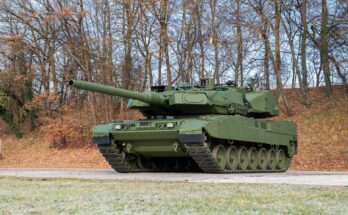Uzbek President Shavkat Mirziyoyev has made his first visit to the White House, the first visit from an Uzbek president since Islam Karimov’s in 2002.
President Mirziyoyev is in the U.S. for the next few days and, as part of his welcome to Washington D.C., sat down with his American counterpart, President Donald Trump, for discussions followed by a working lunch. Much of the thrust of President Mirziyoyev’s visit is to promote his efforts to reform Uzbekistan’s economy and legal structure, as well as seek U.S. investment. President Mirziyoyev noted that the visit may fetch as much as $5 billion in contracts with American firms.
Security is also on the agenda for the two leaders. The two are expected to discuss the situation in Afghanistan, which borders Uzbekistan. Uzbekistan is supportive of political dialogue in Afghanistan and, earlier this year, hosted a conference in Tashkent that noted a political settlement in Afghanistan is “key to the peace and prosperity of Afghanistan and the entire region.”
The United States remains deployed to Afghanistan, which continues to face challenges from militant groups. The Taliban, in particular, is a potent threat to the Afghan government, demonstrated by a large offensive on Farah city earlier this week.
Between the U.S. and Uzbekistan, President Trump suggested that the two sides are exploring closer bilateral military ties. He stated, “We’re working together from the standpoint of the military, including [President Mirziyoyev’s] purchase of equipment and military equipment from the United States.”
President Mirziyoyev did not directly address the subject of arms sales, but he heralded a “new era for a strategic partnership between Uzbekistan and the United States of America” and pointed out that Uzbekistan has “been procuring from the U.S. a lot of technology as well as the equipment.”
Neither President Trump nor President Mirziyoyev indicated what sorts of specifically military equipment Uzbekistan might purchase from the U.S. moving forward. The U.S.’ most recent deliveries to Uzbekistan were of mine-resistant, ambush-protected vehicles — several hundred Cougar, M-ATV, and MaxxPro vehicles — but these were donated second-hand through the U.S. Excess Defense Articles program.
The high-cost of American hardware, as well as the fact that the majority of Uzbekistan’s existing equipment is Soviet or Russian in origin, limit the size and type of equipment that will be procured. In past years, under President Barack Obama, the U.S. has even scuttled an arms deal to Uzbekistan over concerns about technology leakage to Russia.
Nevertheless, Uzbekistan under President Mirziyoyev is emphasizing the modernization of the military, which coincides with President Trump’s arms sales push. Uzbekistan has recently purchased new armored vehicles from Turkey and remains in the market for such hardware. Though the bulk of Uzbekistan’s Air Force is Soviet- or Russian-made, the country has purchased helicopters and transport aircraft from European suppliers and would have potentially bought jet trainers from South Korea were the deal not blocked, demonstrating willingness to purchase from non-Russian suppliers. Most Uzbek aircraft are aged — and the apparent jet trainer requirement was never filled.
#Uzbekistan Air Force has taken delivery of all four C-295Ws (fourth probably arrived early in the year). pic.twitter.com/1f22ljmwmo— Derek Bisaccio (@DerekBisaccio) December 19, 2016
Besides direct procurement, Uzbekistan is also interested in building up its own domestic defense industry, and would be receptive to agreements with the U.S. on localizing the production of military equipment.
More information on arms sales from the U.S. to Uzbekistan may come out as the week goes on, though transparency in arms sales to the countries in Central Asia is usually limited.
Military markets analyst, covering Eurasia, Middle East, and Africa.




